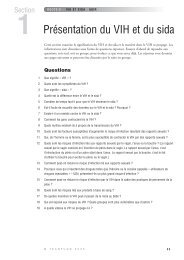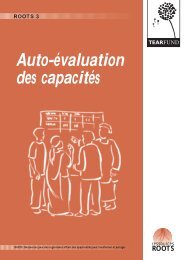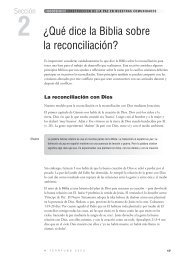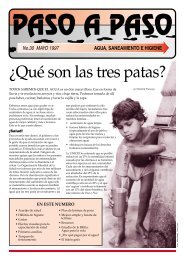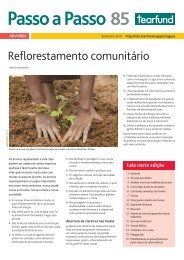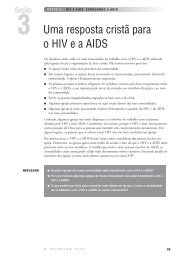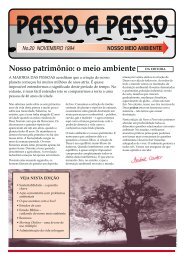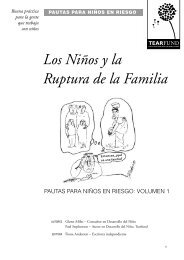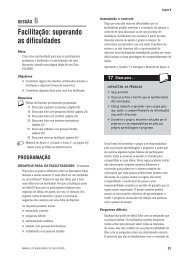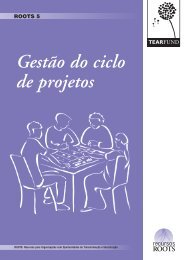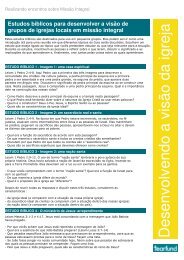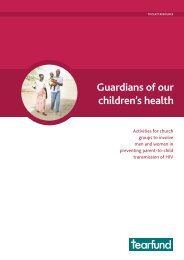Children and Family Breakdown - The Tearfund International ...
Children and Family Breakdown - The Tearfund International ...
Children and Family Breakdown - The Tearfund International ...
Create successful ePaper yourself
Turn your PDF publications into a flip-book with our unique Google optimized e-Paper software.
CHILDREN AT RISK GUIDELINES<br />
PRINCIPLE 3 WORKING AT DIFFERENT LEVELS<br />
3.1 <strong>The</strong>re should be an awareness of what level the programme is<br />
addressing, though not to the exclusion of other levels.<br />
• Individual • Peer<br />
• <strong>Family</strong> • Organisational/Institutional • Community<br />
• National • Policy/Political • Spiritual<br />
PRINCIPLE 4 IDENTIFYING NEEDS AND<br />
PRIORITIES<br />
4.1 <strong>Children</strong>’s (<strong>and</strong> parents’) needs are identified. This includes<br />
listening to <strong>and</strong> involving children <strong>and</strong> parents.<br />
■ Listening to parents informally <strong>and</strong> formally (eg in small<br />
groups) may help to reveal their concerns <strong>and</strong> fears <strong>and</strong><br />
can be therapeutic in itself. Parents (especially on low incomes in urban settings)<br />
may feel unsupported <strong>and</strong> unable to cope with the responsibilities of parenthood.<br />
■ Although the emphasis of the programme may be on the parents, the specific<br />
needs of the child also need to be considered.<br />
For example, although parents may feel that they need to work long <strong>and</strong> late in order to receive sufficient<br />
income for their family, the emotional needs of the child who is separated from parents for most of<br />
the time, most of the week also need to be considered. Similarly, a programme dealing with domestic<br />
violence against women must also take into account the psychological effects of children observing<br />
such violence.<br />
■ Research can be done with children <strong>and</strong> young people to find out how they perceive<br />
the needs, problems <strong>and</strong> strengths of the family <strong>and</strong> community. What do they feel<br />
can <strong>and</strong> should be done? Young people in particular often feel that adults do not<br />
listen to them. This way they can feed back their views to their parents <strong>and</strong> other<br />
decision-makers in the community. This will in turn help them to feel heard <strong>and</strong><br />
increase their self-esteem.<br />
4.2 Staff are experienced <strong>and</strong> trained in communicating with children <strong>and</strong> their families <strong>and</strong><br />
helping facilitate children’s participation.<br />
■ Professionals <strong>and</strong> non-professionals alike can benefit from workshops <strong>and</strong> training<br />
in this important area. More experienced staff can also act as mentors to those<br />
with less experience.<br />
VOLUME 1: CHILDREN AND FAMILY BREAKDOWN<br />
24



